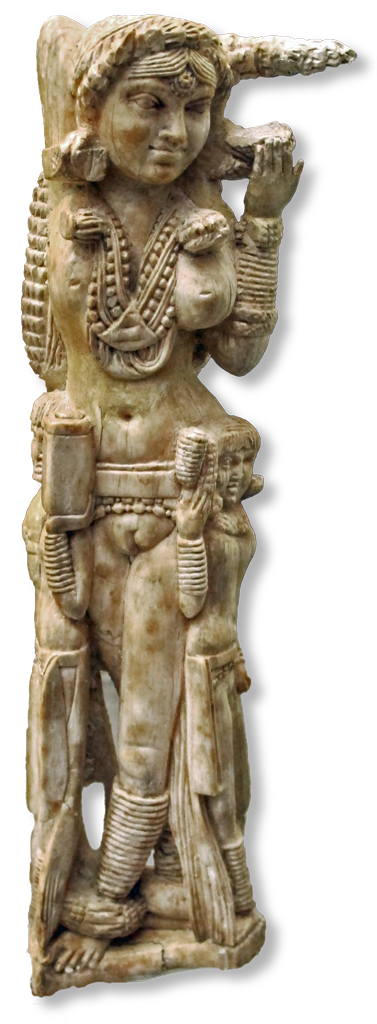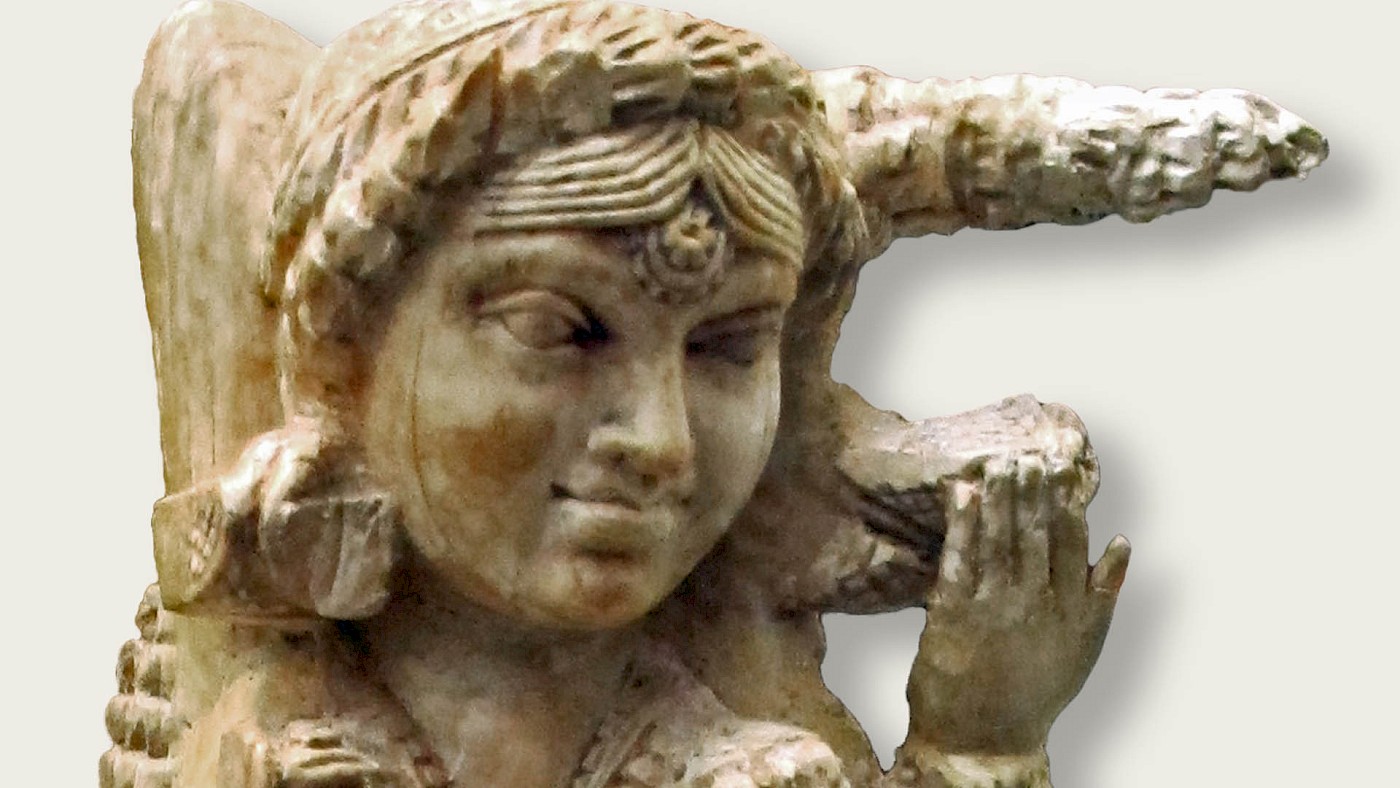If you visit the National Archaeological Museum in Naples, you shouldn’t miss the Gabinetto Segreto (“Secret Cabinet”). This room is ostensibly only accessible to adults, even though I have seen children gleefully being shown in by their parents while the guards were looking the other way. It houses many of the erotic objects and pieces of art recovered from Pompeii, Herculaneum, and other sites in Campania that were smothered by the eruption of the Vesuvius in AD 79.
One of the most fascinating objects in the Gabinetto Segreto is this ivory figurine or statuette, depicting a woman who is naked apart from her belt and jewellery, and flanked by two small children.

The statuette was recovered from a house in Pompeii that since then carries the name Casa della statuetta Indiana (i.e. “House of the Indian statuette”), located along the Via dell’Abbondanza. It was found in a number of pieces and reassembled. The restored figurine stands a little under 25cm tall.
This ivory figure was originally made in India, though the exact place where it was produced has been the subject of some debate. Current consensus seems to favour Gandhara, once an ancient kingdom in the northwest of what is today Pakistan, as similar statuettes have been found there. Gandhara is renowned for its Greek-inspired art, a result of having been conquered by Alexander the Great. Ivories of this type were originally thought to date from the second century AD at the earliest, but the discovery of this statuette in a context that by necessity has to date to the first century AD or earlier has changed this. At present, it is thought that the statuette was made perhaps in the second quarter of the first century AD (see also M. Levi D’Ancona, “An Indian statuette from Pompeii”, Artibus Asiae 13.3 (1950), pp. 166-180).
The statuette almost undoubtedly made its way west via trade networks of some kind; it is not evidence that people from India actually lived in Pompeii. It’s also not exactly sure what the statuette was originally used for: the museum suggests that it may have been handle of some kind (perhaps for a mirror?), while other writers have suggested that it was originally one of the three legs of some kind of small piece of furniture.
The female figure has been identified as the goddess Lakshmi, associated with beauty and fertility, and essentially the Indian equivalent of Aphrodite (Venus). Others suggest that she more likely represents a yakshi, a female tree spirit that embodies fertility. In favour of the former interpretation, however, are the two children flanking the female figure on either side, which recall similar representations of the goddess Aphrodite (Venus). The syncretic version of this goddess is referred to as Venus-Sri-Lakshmi.
Syncretism is a common feature among ancient polytheistic religions, where deities or heroes of one culture were often equated with the deities or heroes of another that shared a number of characteristics. Aside from Venus-Sri-Lakshmi, examples include Zeus-Ammon (Greek Zeus and Egyptian Ammon) and the hero Hercules-Magusanus (Roman Hercules, himself adopted from the Greeks, and the Celtic/Germanic hero Magusanus worshipped in the Low Countries).
